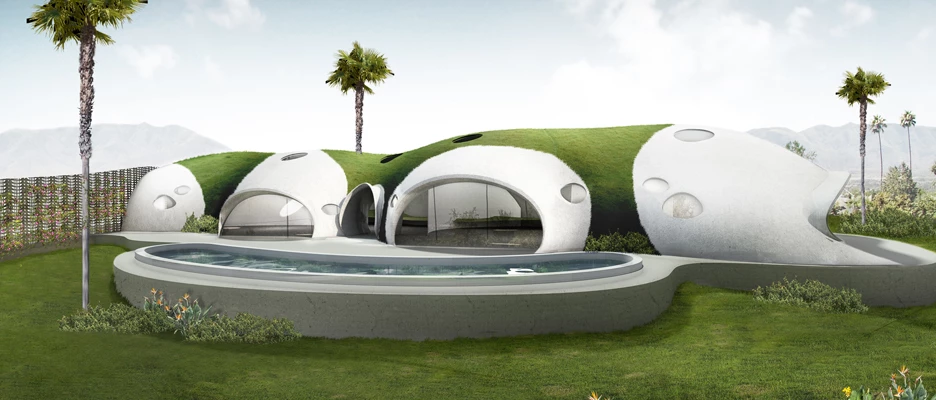It may not come as a surprise that a papier-mâché-like building technique using an inflatable membrane and concrete dome is yet to really take hold. It was in the 1960s that architect Dr Dante Bini pioneered the Binishell as a cheaper and more eco-friendly way of construction. While this led to the building of more than a thousand domes, the practice was largely abandoned, due in part to concerns surrounding their stability. Dante's son Nicolo, also an architect, is now looking to revive the Binishell method, with a view to providing low-cost housing solutions around the world.
In the 1960s, as they are now, Binishells were championed for their relatively quick construction time and low environmental impact. A foundation slab is laid and a large bladder anchored to it, stretching right to the perimeter. Concrete is then poured on top and the bladder inflated, creating a dome structure as it sets.
The same pneumatic wedge method was employed by a team at the Vienna University of Technology to construct a concrete shell structure last month.

The construction method was efficient, but structural issues were reported and in some cases, led to their demise.
"Of the 1,600 Binishell buildings that were built between 1964 and 1980, two have had to be demolished for structural reasons," Nicolo Bini tells Gizmag.
One of the dismantled domes was used as a venue for exams, conferences and graduation ceremonies at Monash University in Victoria, Australia. The 11 m (36 ft) high dome was designed by Nicolo's father and constructed in 1979 using 300 tons of concrete, steel and membrane. A risk assessment conducted in 2009 revealed structural issues with the building and it was promptly demolished in around fifteen minutes.
"Reactive clay in the soil caused the footing of the Binishell to twist, subsequently causing the shell to crack," said Facilities and Services campus manager, Brian Start, following the demolition. "In more recent times the external thermal membrane had started to fail."
So while the principle largely remains the same, what makes Nicolo Bini so confident his approach can negate the issues that plagued the Binishell's early iterations?
"We have totally re-engineered every aspect of the technology to not only make them safer, and easier to build, but also greener and more affordable," he says. "Everything from the anchoring system in the foundations, to the reinforcement bar, to the concrete mix, the design and materials used for the bladder."

Nicolo Bini says that these enhancements make the new domes compliant with international building codes, as well as more resistant to to the forces of nature.
"Our domes have a lower center of gravity, are monolithic and continuous point of connection to the foundations," he reports. "All this makes them far stronger in resisting loading from earthquakes and high winds. Their natural aerodynamics, derived from the construction process itself, also minimizes wind loads. The fact they are made from concrete makes them more able to resist fires and flooding."
Nicolo Bini's company has devised three new models of the Binishell: one designed for middle income housing and educational facilities, another for low-cost and disaster relief housing and also a more flexible option, designed for customized private homes and resorts. It is claimed that the Binishells use half the resources of comparable traditional buildings, cost half as much, use half the energy and can be constructed three times faster.
The company is set to to put the new Binishell design to the test and will begin construction of a full-scale home in Malibu later this year.
Source: Binishells




















